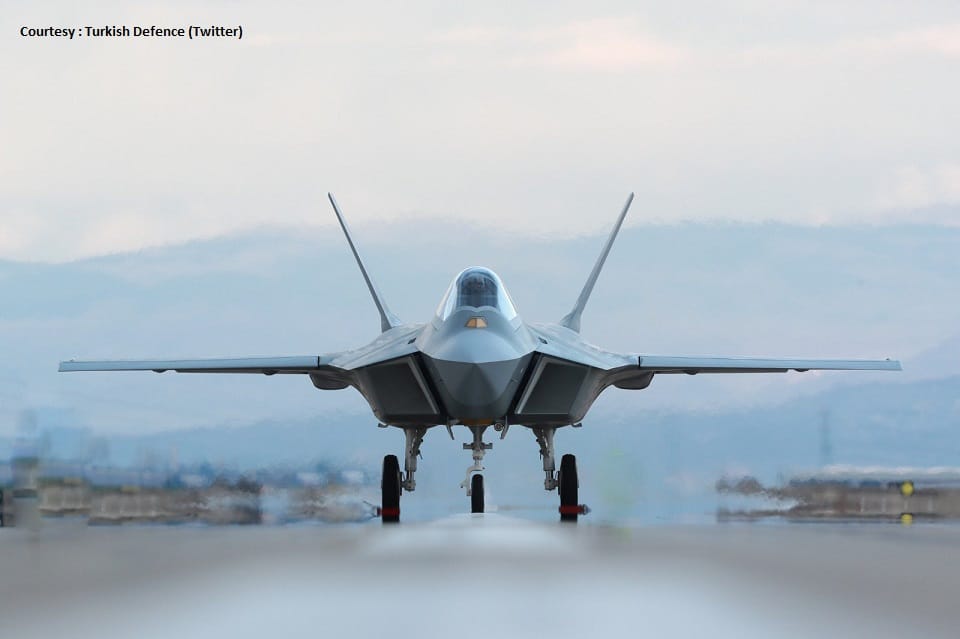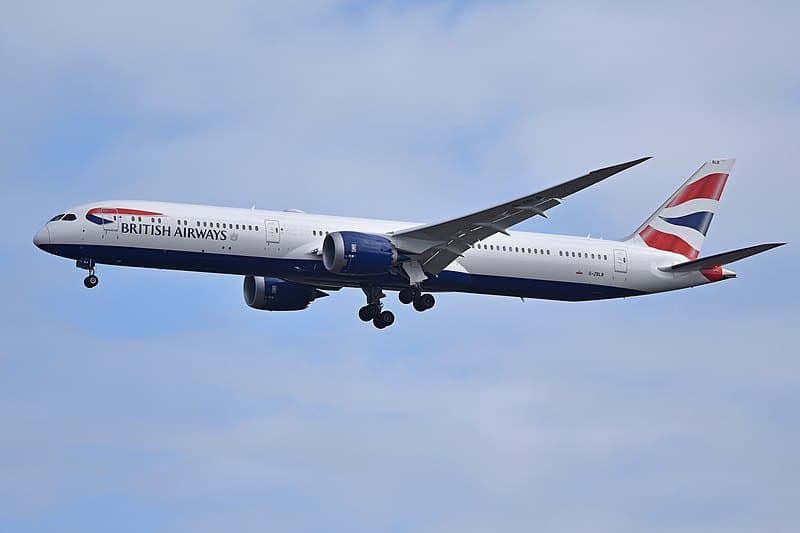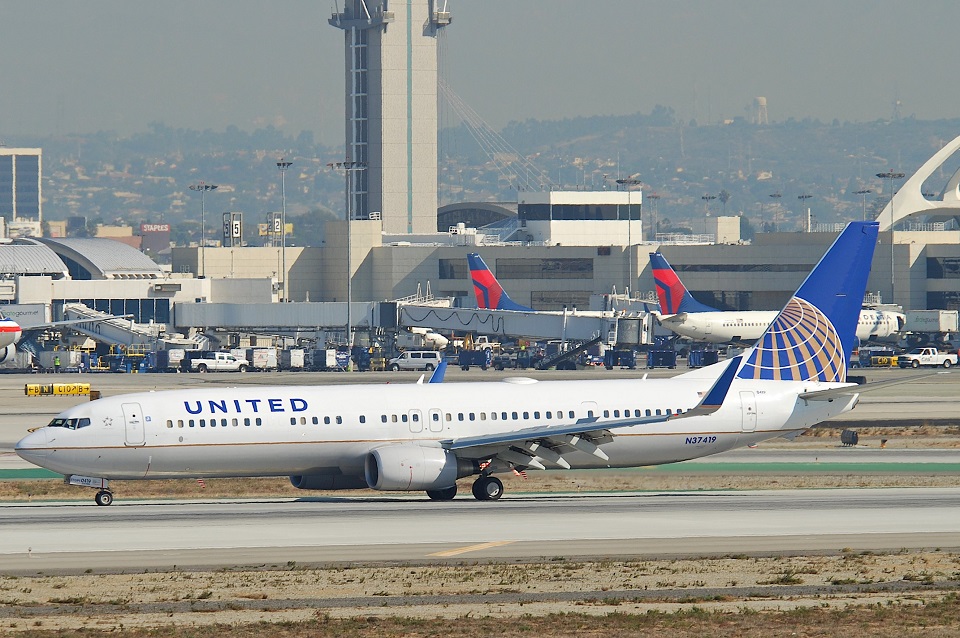Aviation
Turkish 5th-generation fighter aircraft were first spotted in taxing.

Turkish currently leads India and South Korea in the race for the next generation of fighter jets, as evidenced by data from the aircraft airframe that was revealed a few months ago. Turkish is now prepared to begin taxi trials. If Turkey manufactures the fifth-generation fighter jet in the future, it will be the most anticipated project for the country and will boost its reputation of aerospace technology.
Turkey’s fifth-generation stealth fighter, the TF-X, also known as the National Combat Aircraft (MMU), has started engine ground runs and slow-speed taxi testing. It will make its first flight by the end of 2023.
While more design refinement may be necessary to make the platform a low-observable platform, Turkey asserts that the basic prototype will be evaluated and that many adjustments will be made to the aircraft before it goes into production.
Turkish Aerospace Industries (TAI) is currently developing the TF-X, a fifth-generation Turkish fighter jet. It is anticipated to be capable of air-to-air, air-to-ground, and reconnaissance operations and to feature stealth capabilities and cutting-edge avionics.
To upgrade Turkey’s defensive capabilities and replace its outdated F-16 fleet, the TF-X is being built. TAI and British defense firm BAE Systems are working together on the project. The TF-X prototype is scheduled to have its maiden flight in 2025, with the goal of having the aircraft in service by 2030.
It is important to note that TF-development X’s has faced a number of difficulties, such as concerns about technology transfer and financing. The project is still supported by the Turkish government, which views it as a crucial representation of the nation’s developing indigenous defense industry.
The F-16 and TF-X prototypes both use General Electric F110 engines, with Turkey TRMotor and Rolls-Royce working together to create a new engine that may be available by the end of the decade.
The TF-X MMU project has advanced technology in areas like low visibility, internal weapons slots, high maneuverability, increased situational awareness, and sensor fusion, all of which are necessary for a new generation of aircraft, making Turkey one of the few nations with the infrastructure and technology to produce a fifth-generation combat aircraft.
The aircraft also has numerous data fusion, artificial intelligence, and autonomous target identification and recognition capabilities.
Turkey will gradually make progress towards the development of a 5th generation fighter aircraft by 2028. National Combat Aircraft and the South Korean KAI KF-21 Boramae fighter jet program will start as a 4.5 generation program but the transition to a 5th generation fighter aircraft in the next ten years. The Advanced Medium Combat Aircraft (AMCA), on the other hand, is being developed by India with a more radical approach. It will start out as a 5th generation fighter jet in the Mk1 tranche and transition to a 5.5 generation fighter in the Mk2 tranche in 2035.

Aviation
Air India’s B747 Makes Its Final Journey, Waving Farewell to Fans

In a poignant moment marking the end of an era in aviation history, Air India’s iconic Boeing 747 aircraft, affectionately known as the ‘Queen of the Skies,’ embarked on its ultimate journey from Mumbai’s international airport.
The departure, bound for Plainfield, USA, where it will undergo dismantling and part-stripping under the ownership of American AerSale, signals the closure of a storied chapter for the airline.
Once revered for transporting dignitaries ranging from prime ministers to presidents, the Boeing 747 has etched itself into aviation lore. Yet, as airlines worldwide pivot towards more contemporary and cost-effective aircraft, Air India’s decision to bid farewell to its remaining Boeing 747s reflects the pragmatic realities of today’s aviation landscape.
The sale of these majestic planes to AerSale represents a strategic move by Tata Group, Air India’s new custodian, towards optimizing operational efficiency and embracing modern industry standards. Out of the four aircraft sold, two will be repurposed into freighters, while the remaining pair will be meticulously disassembled to salvage valuable components.
The final flight from Mumbai witnessed a touching tribute as pilots performed a traditional ‘Wing Wave,’ symbolizing the conclusion of the Boeing 747‘s distinguished service with Air India. This poignant gesture encapsulates the deep sentiment attached to the aircraft’s departure and its significant contribution to the airline’s legacy.
As the Boeing 747 embarks on its journey to Plainfield, USA, nostalgia permeates the air, evoking memories of its maiden flight on March 22, 1971. Over five decades, Air India operated a total of 25 Boeing 747s, each leaving an indelible mark on the annals of aviation history.
Middle East
British Airways Resumes Daily Flights to Abu Dhabi, After 4-Year hiatus

British Airways made its way back to Abu Dhabi, landing at Zayed International Airport. Following a four-year break in service, both crew and passengers were greeted with enthusiasm.
In the summer of 2024, British Airways plans to launch a daily route, utilising a Boeing 787-9, from London Heathrow to Abu Dhabi. The new route enhances ties between the UAE and the UK and expands vast worldwide network, catering to passengers who may be visiting friends and family or travelling for business.
Arriving in Abu Dhabi at 08.30+1, flight BA073 to Abu Dhabi leaves London Heathrow at 22.25. Departing at 10.10 and landing at London Heathrow at 15.20 is the inbound flight (BA072).
The chief executive officer and managing director of Abu Dhabi Airports, Elena Sorlini, stated: “We are delighted to welcome British Airways to Zayed International Airport. Their daily schedule is expected to improve connectivity and stimulate travel and business.” Visitors may experience the dynamic capital of the United Arab Emirates like never before at our brand-new, award-winning, state-of-the-art terminal, where they will be welcomed with the best kind of Emirati hospitality.”
Flight schedule:
| London Heathrow (LHR) to Zayed International (AUH)All times are local | ||||||
| Season | Flight number | Departing LHR | Arriving AUH | Flight number | Departing AUH | Arriving LHR |
| Summer ‘24 | BA73 | 22:25 | 08:30+1 | BA72 | 10:10 | 15:20 |
| Winter ‘24 | BA73 | 22:25 | 09:30+1 | BA72 | 11:10 | 15:20 |
Aviation
FAA investigation: Passenger seated in Captain’s seat inside cockpit at cruising altitude

A viral video capturing a startling moment aboard a United Airlines charter flight from Denver to Toronto has triggered a federal investigation.
The footage, initially shared on social media by Hensley Meulens, the hitting coach for the Colorado Rockies baseball team, depicts a member of the coaching staff seated in one of the pilot seats while the aircraft was in mid-flight.
In his caption, Meulens expressed gratitude to the captain and first officer for allowing him this unusual experience. The video, filmed by another passenger, reveals the cockpit door open, and at one point, a third passenger briefly enters the flight deck. Alarmingly, during this time, the captain was absent from the cockpit.
Despite the flight being a private charter operated by United Airlines, company and Federal Aviation Administration (FAA) regulations strictly prohibit passengers from entering the cockpit during flight or leaving the flight deck unsecured.
United Airlines swiftly responded, expressing deep concern over the incident. A spokesperson emphasized that the video depicted an unauthorized person in the flight deck at cruising altitude with the autopilot engaged, constituting a clear violation of safety and operational policies.
The FAA confirmed that it is actively investigating the incident, highlighting that unauthorized access to the flight deck during flight is a violation of federal regulations. The agency assured that it is taking the matter seriously and will conduct a thorough examination to ensure compliance with aviation safety standards.






















